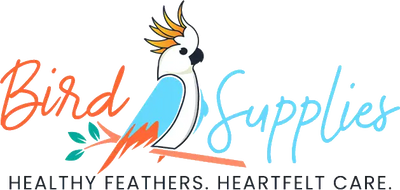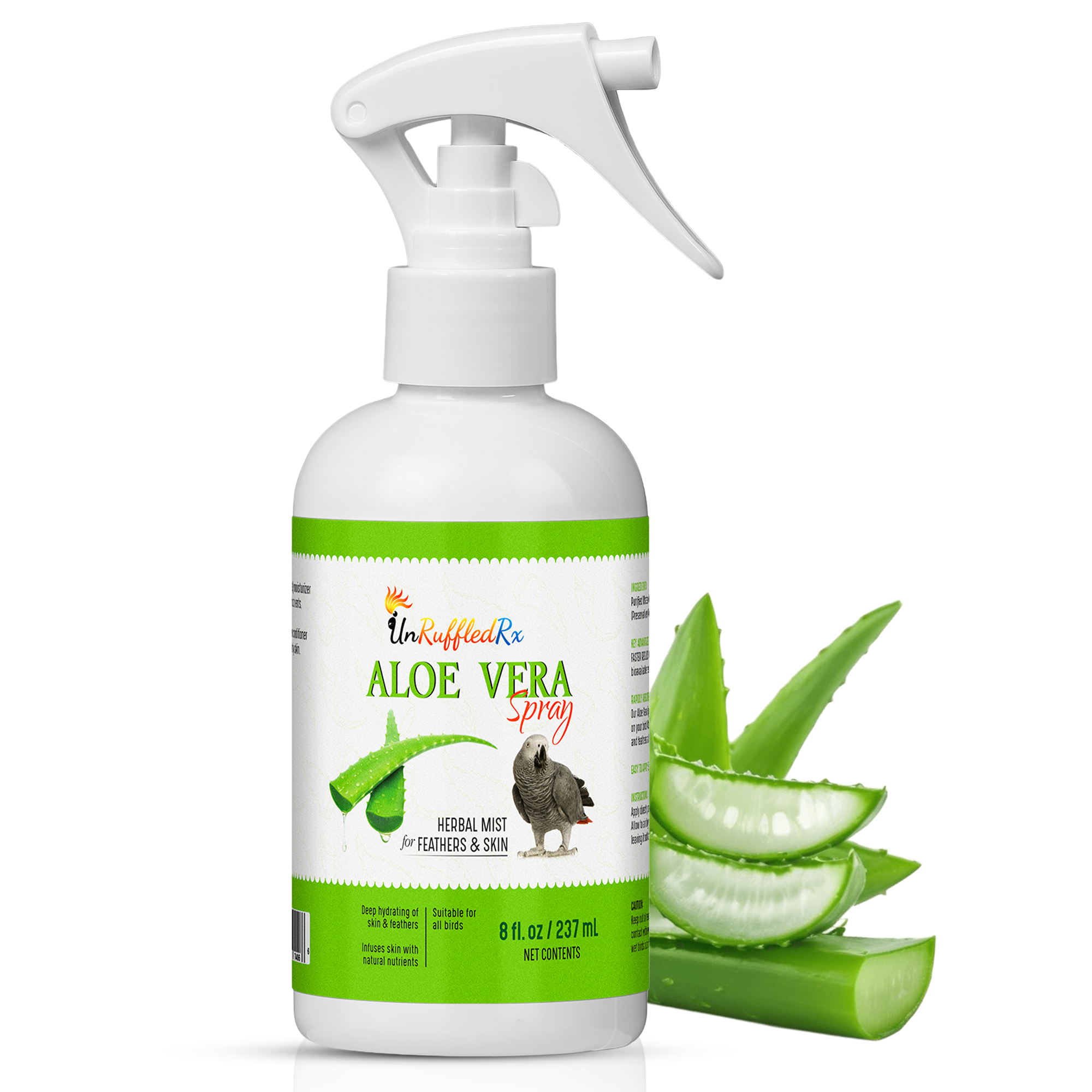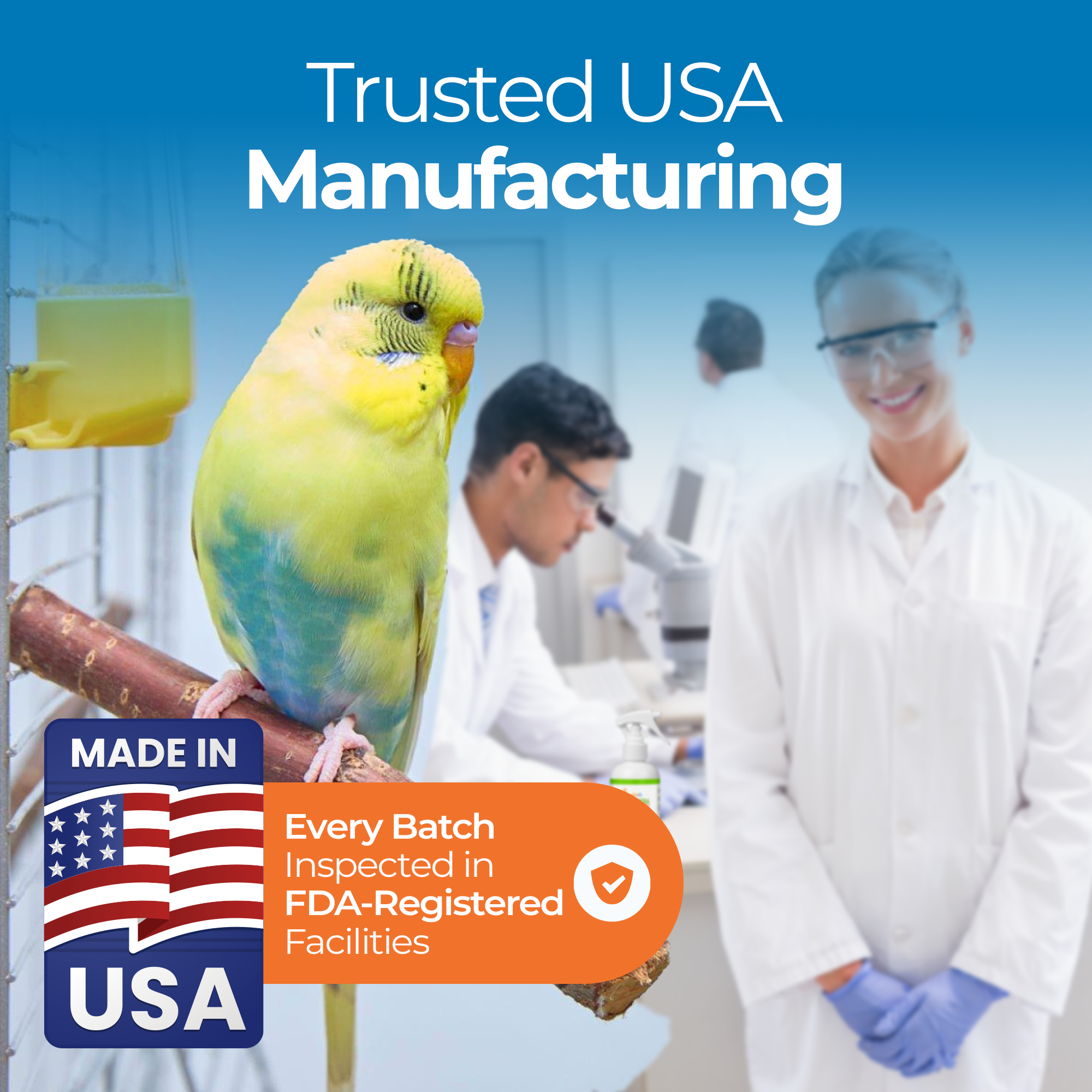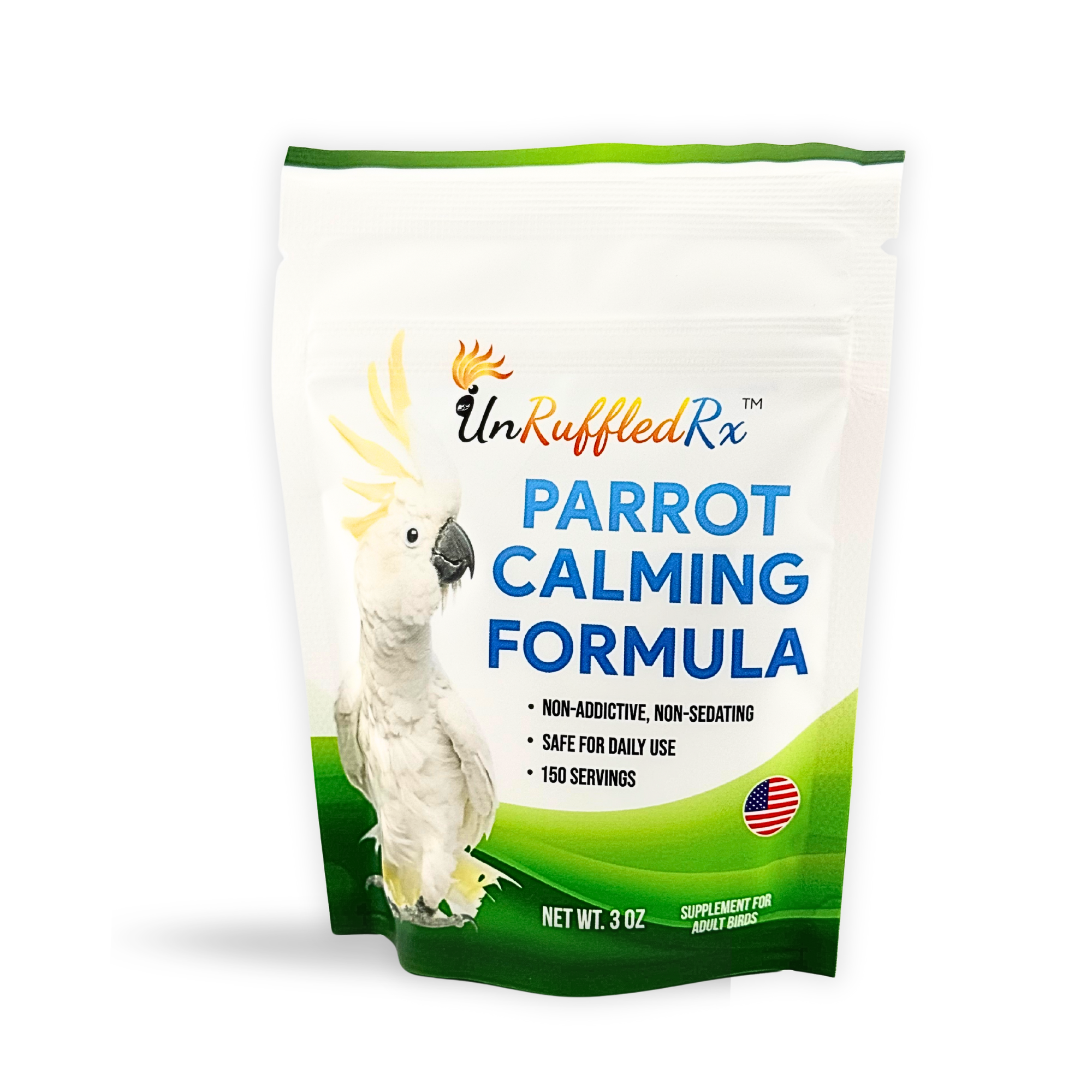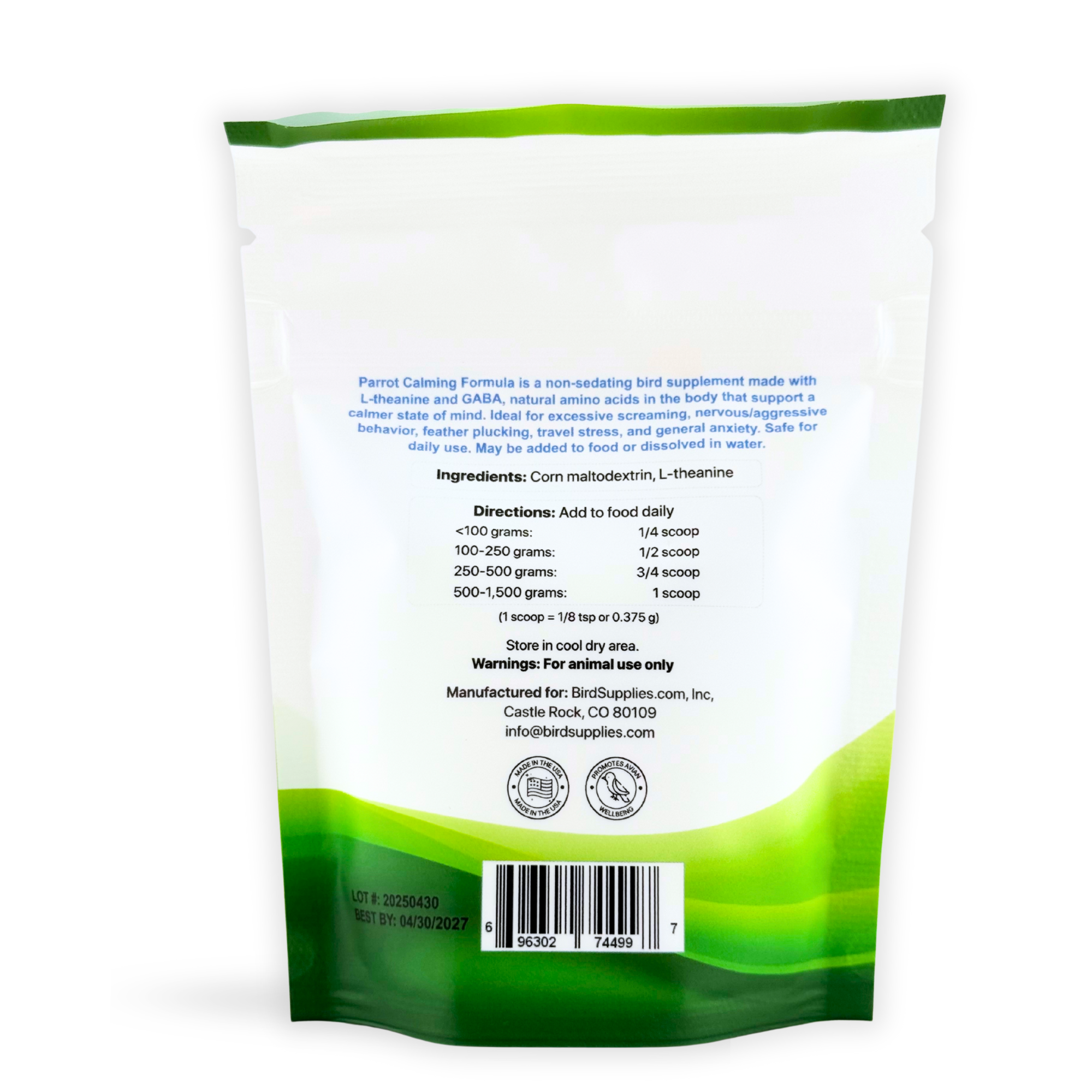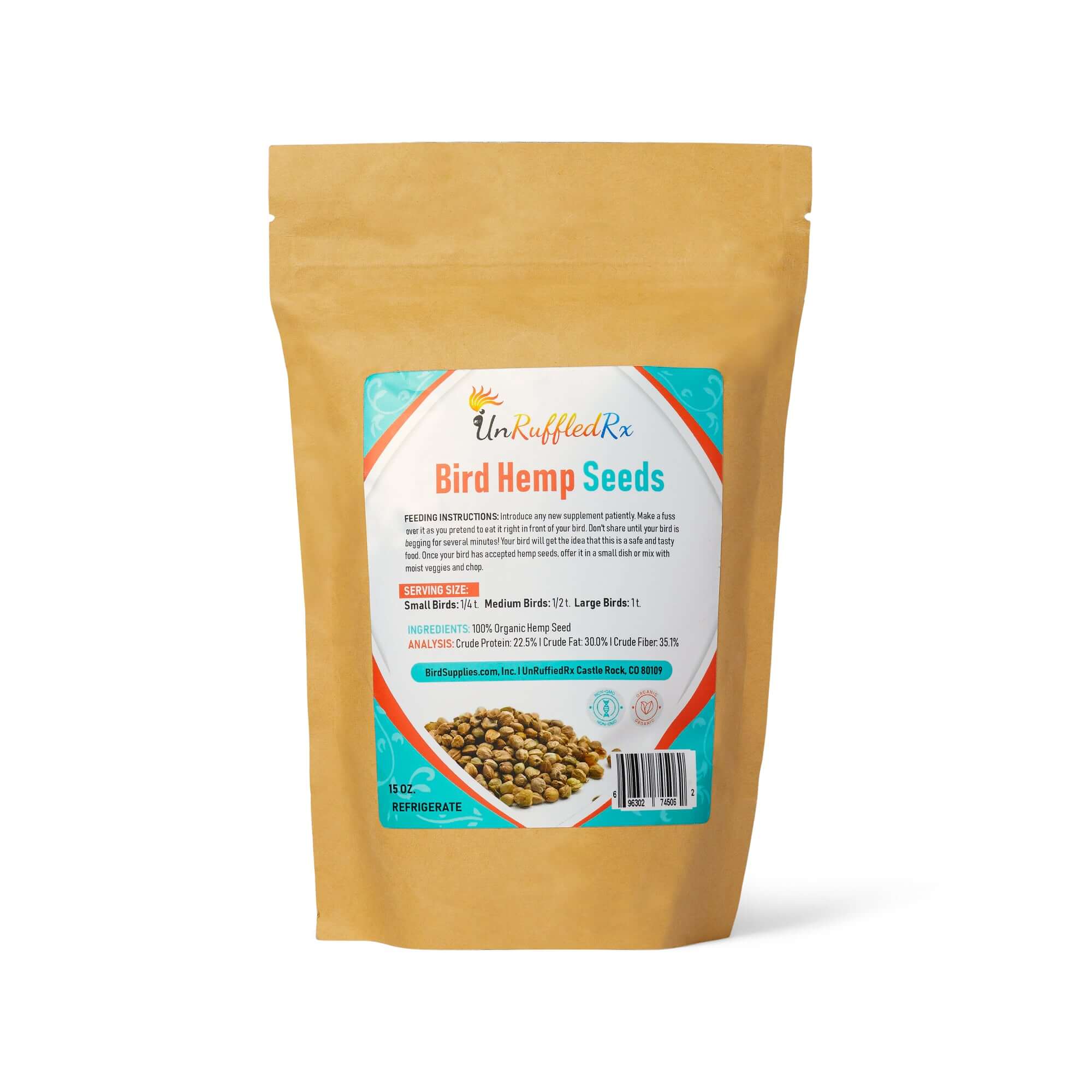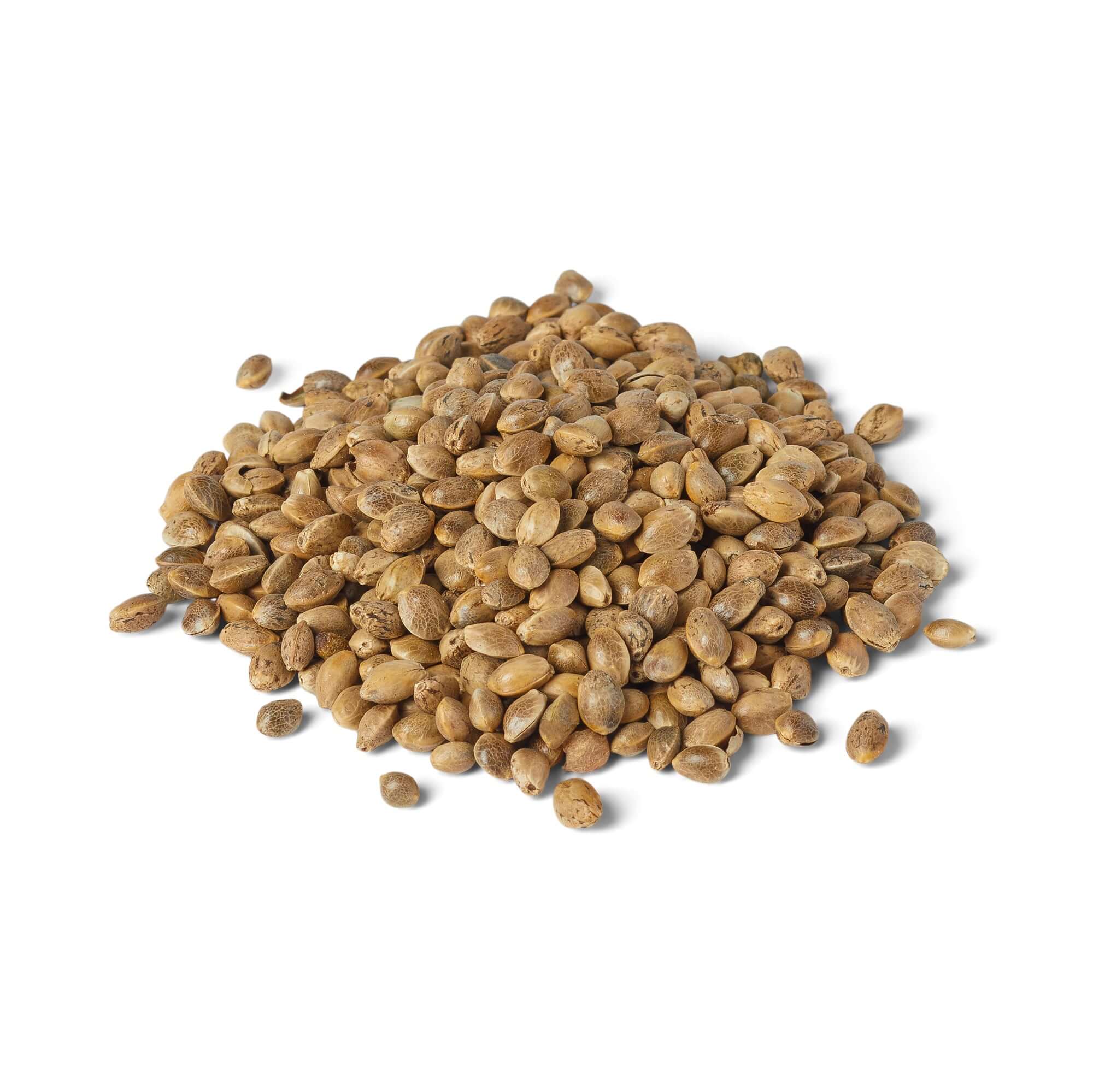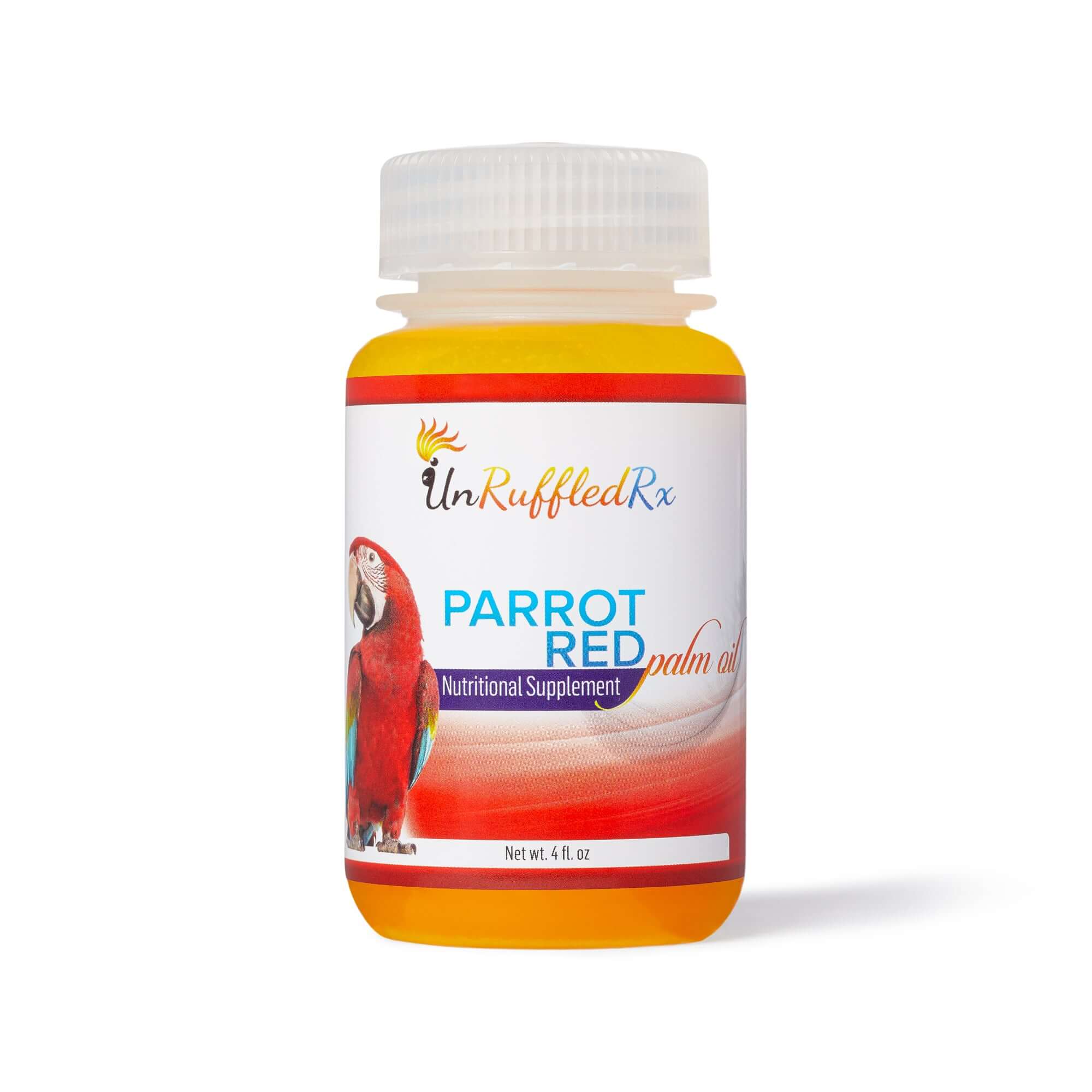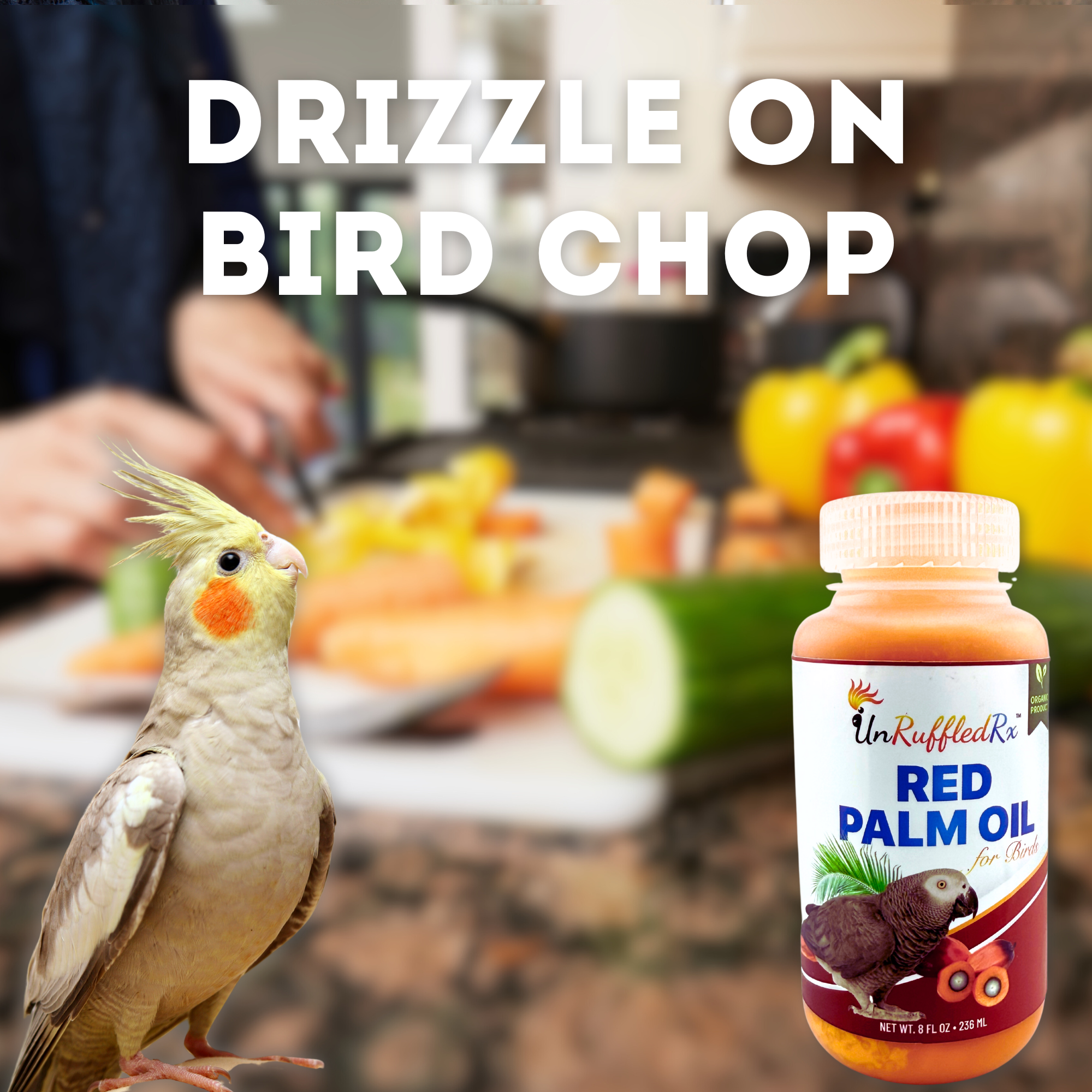- Why Bird Seed Diets Fall Short
- A Healthier Parrot is Easier Than You Think
- Building the Perfect Parrot Diet
- How to Transition Your Bird to a Healthy Diet
- Quiz
If you’re like most parrot owners, you care deeply about your bird’s well-being and want them to live a long, happy life. But did you know that a seed-based diet, while seemingly simple and convenient, could be quietly harming your feathered friend? Seeds often fall short on essential nutrients, leading to serious health problems like obesity, malnutrition, and organ damage. This blog breaks down the hidden dangers of seed diets and why they’re not enough to support your parrot’s health and vitality.
The great news is that with a few adjustments and the right tools, you can completely transform your bird’s diet for the better. We’ll guide you through what a balanced parrot diet looks like, why variety is key, and how to transition your bird without stress. Along the way, we’ll tackle common myths about seed diets—like the difference between store-bought mixes, raw seeds, and soaked seeds—and give you actionable tips to get started. Let’s work together to give your parrot the vibrant, healthy life they deserve!
Why Bird Seed Diets Fall Short
1. Seeds Are High in Fat
Seed-only diets often result in obesity and fatty liver disease, causing long-term health risks for your bird. Essential fatty acids are needed in small amounts, but most seeds far exceed this requirement, leading to serious issues like gall bladder problems or pancreatitis.
Many store bought seed mixes marketed for parrots have misleading labels claiming they are "complete diets" or "fortified with vitamins." However, as Villaverde and Garner's research (2007) highlights, these synthetic vitamins are often discarded when birds crack open the seed hulls, leaving them with only fatty, nutrient-poor kernels.
This creates a false sense of security for bird owners who believe they are providing a well-rounded diet, when in reality, the bird is receiving minimal nutrition.
|
Limiting seeds and choosing plant-based oils like red palm or coconut oil, in moderation, can support healthier fat intake.
2. Processed Bird Seeds Are Nutritionally Deficient
Feeding your parrot only seeds can lead to serious health problems like obesity and fatty liver disease. Seeds are high in fat but lack essential nutrients, which can harm your bird over time. A study in the Journal of Avian Medicine and Surgery (Villaverde and Garner, 2007) highlighted how seed-heavy diets are linked to nutritional deficiencies and poor health outcomes in pet birds.
Malnutrition from an all-seed diet doesn’t happen overnight, but it can develop alarmingly fast. Within weeks to months, parrots can begin showing subtle signs like dull feathers, reduced energy, and weight gain, which often go unnoticed until the damage becomes more severe. Left unchecked, long-term deficiencies in essential nutrients like Vitamin A, calcium, and amino acids can lead to infections, organ failure, and even premature death. By the time symptoms like lethargy or labored breathing appear, the bird’s health may already be at risk, emphasizing the need for preventative dietary changes.
Many pet store employees, breeders, and sometimes unknowledgeable vets mislead bird owners into believing that store bought seed diets are sufficient. Often, this advice is given to make a quick sale or because of outdated information. You’re here now, learning what your bird truly needs, and that’s what matters most. Making changes to your parrot’s diet may take time and patience, but the effort will pay off in a healthier, happier companion.
Common Nutrient Deficiencies in Seed Diets
1. Vitamin A
✅ Why It’s Important:
- Boosts immune function.
- Supports eye and respiratory health.
🛑 Deficiency Risks:
- Infections and respiratory issues.
- Poor feather quality and avian rhinolith.
- Learn more about avian rhinolith here.
2. Calcium
✅ Why It’s Important:
- Critical for strong bones, egg production, and muscle function.
🛑 Deficiency Risks:
- Weak bones and fractures.
- Egg-binding in female birds.
- Risk of seizures.
3. Vitamin D3
✅ Why It’s Important:
- Helps absorb calcium for bone health.
🛑 Deficiency Risks:
- Metabolic bone disease.
- Soft bones and fractures.
4. Essential Amino Acids (Protein)
✅ Why It’s Important:
- Builds muscle and supports feather quality.
- Essential for overall growth and repair.
🛑 Deficiency Risks:
- Poor feather condition.
- Muscle weakness and stunted growth.
5. Omega-3 Fatty Acids
✅ Why It’s Important:
- Promotes brain function and heart health.
- Reduces inflammation.
🛑 Deficiency Risks:
- Chronic inflammation.
- Cardiovascular problems.
- Dull or brittle plumage.
Seed-only diets may leave your bird missing out on these crucial nutrients. A balanced diet that includes pellets, fresh vegetables, fruits, and soaked seeds ensures your parrot gets what they need to thrive!
Seed Showdown: Best and Worst Options for Your Parrot
| Type of Seed | What It Is | Nutritional Value | Important Notes |
|---|---|---|---|
| Store-Bought Seeds | Pre-packaged seed mixes often include fatty, tasty seeds like sunflower, safflower, and millet, with fillers like cracked corn. Coated with synthetic vitamins to appear nutritious. | High in fat but very low in essential nutrients like Vitamin A, calcium, and amino acids. Synthetic vitamins are lost when the hulls are discarded. Offers minimal protein. | Over-reliance can lead to obesity, fatty liver disease, and nutrient deficiencies. These mixes are designed to appeal to birds' taste buds, not their nutritional needs. |
| Raw Seeds | Organic, unprocessed seeds with higher nutritional quality. Examples include chia, flaxseed, pumpkin seeds, sesame seeds, and buckwheat. | Rich in healthy fats, omega-3 fatty acids, and some minerals like magnesium. However, still lacks Vitamin A and calcium. Protein content varies depending on the seed. | Can be used as a treat or supplement, but needs to be balanced with other food groups. Select organic, pesticide-free varieties to avoid harmful chemicals. |
| Soaked Seeds | Seeds soaked in water to start the sprouting process. Includes mung beans, fenugreek, radish seeds, and lentils, like those found in the UnRuffledRx Sprouting Seed Mix. | Enhanced nutrient bioavailability, including increased B-complex vitamins and better protein digestibility. Sprouting reduces anti-nutrients, improving mineral absorption. | Excellent for hydration and providing varied nutrients. However, soaked seeds should complement a balanced diet with pellets, fresh veggies, and fruits. |
3. Pesticides and Chemicals
Packaged seed diets can expose your bird to harmful pesticides and chemicals. Non-organic seeds like sunflower, millet, and safflower are often treated with insecticides, fungicides, and preservatives to prevent mold and pests. These chemicals don’t wash off easily, and once ingested, they can harm your bird’s sensitive system, leading to immediate and long-term health risks.
Pesticides and fungicides can cause severe issues, including respiratory irritation, liver damage, and neurological problems like tremors or seizures. Over time, toxins may accumulate, weakening your bird’s immune system and leaving them vulnerable to infections. To protect your bird, opt for organic, untreated seeds and provide a variety of fresh, pesticide-free foods to ensure a safer, healthier diet.
Now that we understand the problems with processed bird seed diets, let’s explore how to create a healthier, more balanced diet for our feathered friends.
A Healthier Parrot is Easier Than You Think
Your parrot’s diet plays a huge role in their health, energy, and lifespan. But figuring out what to feed them doesn’t have to be complicated. Wild parrots eat a variety of foods, from fruits and seeds to nectar and even minerals from clay licks. By learning what they eat in the wild, you’ll discover simple ways to create a healthier diet for your bird.
In this section, we’ll look at what wild parrots eat and how their diets vary by species. We’ll also explore the fascinating clay licks some parrots use to get essential nutrients. Finally, we’ll share easy steps to build the perfect diet for your parrot, based on expert advice and tools like the bird food pyramid. With just a few changes, you can help your parrot live a longer, healthier, and happier life.
Parrot Diets in the Wild
Wild parrots have incredibly diverse diets that vary by species and habitat. Some parrots are herbivores, eating seeds, leaves, and other plant matter. Others, like lories and lorikeets, are nectarivores, with specialized brush-tipped tongues to consume nectar. Many parrots, especially those in the Americas, are frugivores, thriving on fruits and nuts.
Old World parrots, such as African Greys from Africa and Asia, tend to eat a mix of seeds, nuts, and fruits. In contrast, New World parrots, like macaws, enjoy a diet rich in fruits, seeds, and nuts. Dr. Donald Brightsmith, a leading researcher on macaws, has documented their feeding habits extensively in South America. His work highlights how varied and nutrient-packed their diets are in the wild.
In the Tambopata region of Peru, parrots display a fascinating behavior: visiting clay licks, or "colpas." These clay banks are critical for their health. Birds like Scarlet Macaws, Blue-and-Yellow Macaws, and Mealy Parrots eat clay to get essential nutrients, especially sodium. Sodium is scarce in their natural diets, and the clay helps fill that gap while neutralizing toxins from unripe fruits or seeds.

Researchers studying these clay licks, like Dr. Brightsmith and his team at the Tambopata Research Center, have found that the clay with the highest sodium levels is most popular. The scene is breathtaking—dozens of parrots gather, squawking and interacting while they eat the mineral-rich soil. This behavior shows just how resourceful wild parrots are in meeting their nutritional needs.
The variety and richness of wild parrot diets remind us of how important it is to provide similar diversity for our pet parrots. Mimicking their natural diet is key to their long-term health and happiness.
Building the Perfect Parrot Diet
A healthy parrot diet should be 40-60% fresh, plant-based foods, with a wide variety to ensure your bird gets all the essential nutrients they need. The remaining 40-60% should come from high-quality pellets, which provide a balanced foundation of essential vitamins and minerals.
Offering a variety of vegetables, fruits, grains, and herbs mimics the richness of a wild parrot’s diet. Different plant-based foods provide unique vitamins, minerals, and antioxidants essential for strong immune systems, vibrant feathers, and overall health.
For example, dark leafy greens like kale and spinach are excellent sources of calcium and Vitamin A, while orange vegetables like carrots and sweet potatoes provide beta-carotene for eye health. Fruits such as papaya and berries add essential antioxidants, and grains like quinoa supply protein and fiber.
By rotating ingredients and including a wide range of textures and colors, you’ll create a more nutritionally complete and mentally stimulating diet for your parrot.
|
Visualize your bird’s diet as a pie chart:

Get our infographic for a complete breakdown of the bird food pyramid.
Pellets are designed to provide consistent, balanced nutrition, filling critical gaps left by seed-only diets. The study confirmed that converting to a pellet-based diet led to better nutrient intake, improved feather quality, and healthier body condition. High-quality pellets, like those made by Harrison’s or Roudybush, are formulated to meet the unique dietary needs of parrots, offering vitamins, minerals, and amino acids that support strong bones, vibrant feathers, and overall vitality. Transitioning to pellets ensures your parrot gets the nutrition they need in every bite, creating a strong foundation for a healthier, happier life.
How to Transition Your Bird to a Healthy Diet
Recent research highlights the importance of transitioning parrots from seed-based diets to pellet-based diets for improved health. A 2022 study by Cummings, Hess, Spielvogel, and Kottwitz in the Journal of Avian Medicine and Surgery, evaluated three diet conversion methods in psittacine birds.
The study found that all three methods—gradual conversion, controlled cold turkey, and group feeding—were effective in helping birds transition to pellets, with the gradual method being the most widely tolerated. This emphasizes that while diet changes can take time and patience, they are achievable and essential for your bird's long-term health.
Quick Facts: Pellet Conversion Success
Success rate of converting parrots from seeds to pellets, as found by Cummings et al.
For most birds, the transition takes less than a week, regardless of their age. The small 4% of unsuccessful attempts were due to owners not fully understanding the instructions or not being prepared to commit to the process.
Take the First Step Toward a Health Parrot Diet
Are you ready to transform your bird’s health and happiness? Making the switch to a balanced diet with fresh foods and pellets can drastically improve their energy, feather quality, and lifespan in just a few simple steps. Take the challenge today—your feathered friend deserves the best, and you’re the one who can make it happen! Share your journey with us using #HealthyBirdChallenge on TikTok, Facebook, or Instagram
Quiz: Test Your Knowledge About Bird Seed Diets
In conclusion...
A healthier, happier parrot is just a few simple changes away. By understanding the gaps in a seed-heavy diet and transitioning to a more balanced approach, you can drastically improve your bird’s energy, feather quality, and overall well-being. Imagine your parrot thriving with bright eyes, vibrant plumage, and a longer life—all because you made the choice to learn and act. Your dedication to their health isn’t just a small step; it’s a life-changing decision for your feathered companion.
Related Posts:
How to Get Your Bird to Eat Vegetables
Fat Is Not The "f" Word In Bird Diets
9 Healthy Treats That Your Bird Will Go Nuts Over
Everything You Need To Know About Bird Calcium
How to Get Your Bird to Eat Vegetables
Cracking The Cockatoo Diet Puzzle: Tips For A Healthy Pet
Discover The Optimal African Grey Diet And Help Your Bird Thrive!
Forage to Flourish: Revamping Your Cockatiel's Diet
References:
Budai, K. A Parrot's Healthy Dining. Go Raw! K &S Natural Company, Ltd. UK. 2020.
Budai, K., and Pao, S. A Parrot Fine Cuisine Cookbook And Nutritional Guide. Quietlight Productions. North Palm Springs, CA. 2018.
Cummings, A. M., Hess, L. R., Spielvogel, C. F., & Kottwitz, J. J. (2022). An evaluation of three diet conversion methods in psittacine birds converting from seed-based diets to pelleted diets. Journal of Avian Medicine and Surgery, 36(2), 145–152. https://doi.org/10.1647/21-00025
https://theparrotsocietyuk.org/site/index.php/parrot-information/veterinary-advice/hypocalcaemia/
https://www.merckvetmanual.com/exotic-and-laboratory-animals/pet-birds/nutritional-diseases-of-pet-birds
https://www.petmd.com/bird/conditions/digestive/c_bd_Acute_Hypocalcemia
Villaverde, C., & Garner, M. M. (2007). Nutritional diseases of pet birds. Journal of Avian Medicine and Surgery, 21(1), 4-11. https://doi.org/10.1647/1082-6742(2007)21[4:NDOPB]2.0.CO;2
Link to This Blog:
Burroughs, D. (2025, January 26). Three problems with an all seed bird diet for parrots. BirdSupplies. Retrieved from https://birdsupplies.com/blogs/news/140891655-three-problems-with-an-all-seed-bird-diet
Diane Burroughs, LCSW is a licensed psychotherapist trained in ABA therapy techniques. She specializes in avian anxiety disorders and is certified in Nutrition For Mental Health. Diane has written a number of bird behavior books and she offers behavior consultations. She's developed a range of UnRuffledRx Science-backed Parrot Wellness Supplies.
Diane's products have been featured in the Journal of Avian Medicine and Surgery and at Exoticscon, a conference for exotic pet veterinarians. Her bird collars & supplements are stocked in avian vet clinics and bird stores throughout the US. With over 30 years in the field of behavior, Diane has created thousands of successful individualized behavior plans that help pets thrive.
TAGS: #ParrotDiet #ParrotNutrition
SHARING IS CARING! PLEASE SHARE ON YOUR FAVORITE SOCIAL MEDIA NOW!
